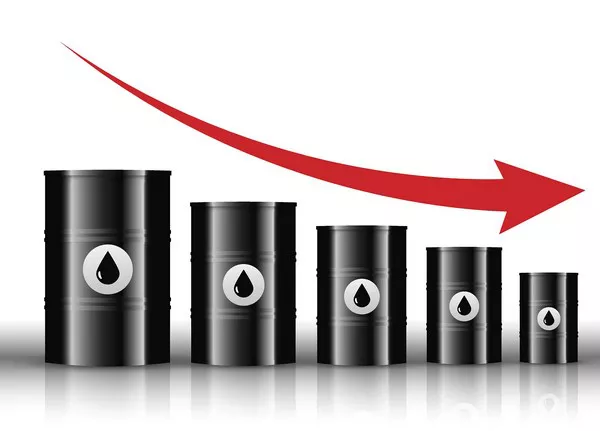Oil prices dropped more than 2% on Wednesday following U.S. President Donald Trump’s outreach to Russian President Vladimir Putin and Ukrainian President Volodymyr Zelenskiy regarding the war in Ukraine. The conflict, which has supported oil prices amid concerns over global supply disruptions, took a turn toward diplomacy, which led to a reduction in the risk premium that had been supporting oil prices.
Brent crude futures settled at $75.18 per barrel, down $1.82 or 2.36%, while U.S. West Texas Intermediate (WTI) crude dropped by $1.95, or 2.66%, to $71.37 per barrel. During the session, U.S. crude futures fell by more than $2 at one point. These declines followed three consecutive days of gains, where Brent had climbed 3.6% and WTI rose by 3.7%.
Trump’s Diplomatic Moves Impact Oil Markets
President Trump’s phone calls with Putin and Zelenskiy marked a significant diplomatic step in the ongoing war in Ukraine. The development removed some of the risk premium from oil prices as investors interpreted the discussions as a potential path to peace.
“Trump doing peace talks has taken some of the risk premium out of oil prices right now,” said Phil Flynn, senior analyst at Price Futures Group.
Trump announced on his social media platform that he and Putin had agreed to start negotiations, with plans to involve Zelenskiy in the conversation. The diplomatic moves came as Zelenskiy’s office confirmed that Trump and Zelenskiy spoke for about an hour.
Economic Data and the Fed’s Stance on Interest Rates
Market attention also shifted to the U.S. Federal Reserve’s stance on interest rates following remarks from Fed Chair Jerome Powell and the release of U.S. inflation data. The data showed that U.S. consumer prices had risen more than expected in January, signaling that inflation remains a concern.
“The combination of higher inflation and the possibility of peace (in Ukraine) is causing a bit of a sell-off in the market at the moment,” Flynn added.
Powell indicated that while the U.S. economy is in a strong position, the Fed is not rushing to cut rates but remains ready to do so if inflation decreases or the labor market weakens.
Inflation Data Fuels Oil Market Concerns
The inflation data has heightened fears of a stronger-than-expected economy, which could dampen hopes for rate cuts. Higher interest rates could slow economic growth, reducing demand for oil.
“The inflation numbers came in hot, reducing the chances of the Fed cutting rates from September to December,” Flynn said.
U.S. Crude Stocks and Global Supply Developments
U.S. crude oil stocks rose more than expected, according to the Energy Information Administration (EIA), while gasoline inventories posted a surprise draw. Distillate stocks saw a surprise build. These inventory changes added to market uncertainty.
Additionally, U.S. sanctions on Russia are expected to limit its ability to export oil, while Ukrainian drone attacks have hindered Russian refinery operations. These supply constraints, however, did not prevent oil prices from dipping due to the growing sense of potential peace in the Ukraine conflict.
OPEC’s Demand Outlook
The Organization of the Petroleum Exporting Countries (OPEC) maintained its demand outlook, projecting global oil demand to rise by 1.45 million barrels per day (bpd) in 2025 and 1.43 million bpd in 2026. These figures were unchanged from last month’s projections.
Meanwhile, the EIA raised its U.S. crude production estimate for 2025, now predicting average production of 13.59 million bpd, up from the previous estimate of 13.55 million bpd.
Political Appointments in the Trump Administration
In other news, the Trump administration appointed Kathleen Sgamma, a prominent oil and gas advocate, to head the Interior Department’s Bureau of Land Management. This department oversees the management of nearly 250 million acres of U.S. public lands, which could have implications for the domestic energy industry.
Conclusion
Oil prices saw a significant drop following diplomatic developments related to the Ukraine conflict, as well as the continued economic impact of inflation and the Federal Reserve’s stance on interest rates. While peace talks have removed some of the geopolitical risk premium, market attention will remain on U.S. economic data and global oil supply dynamics.
Related topics:


